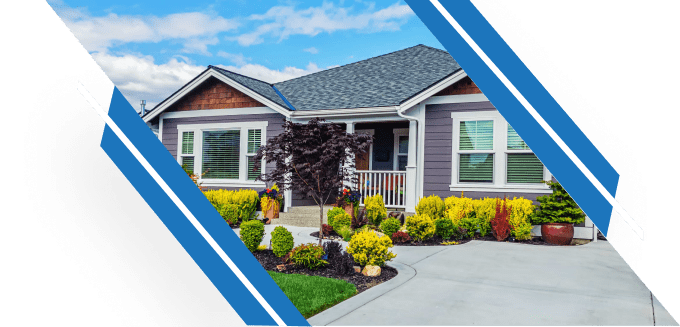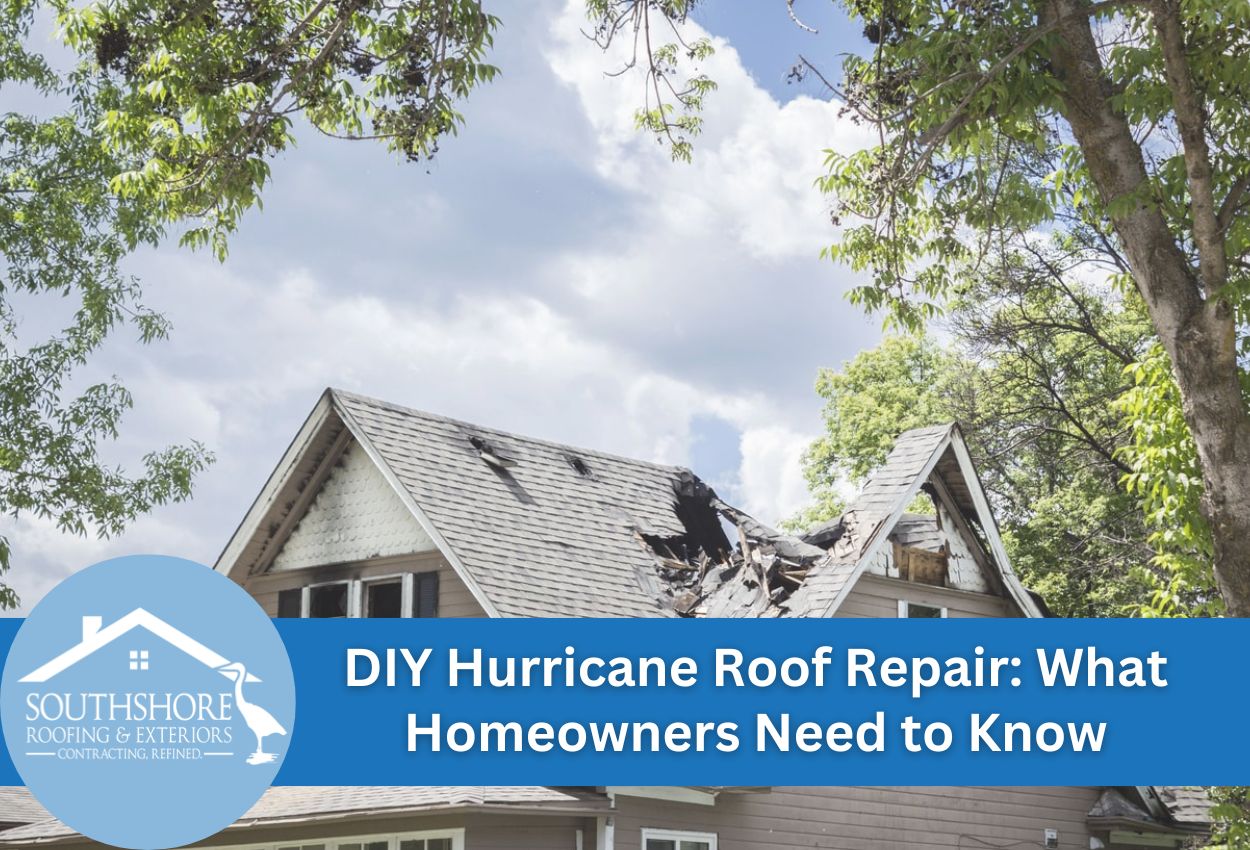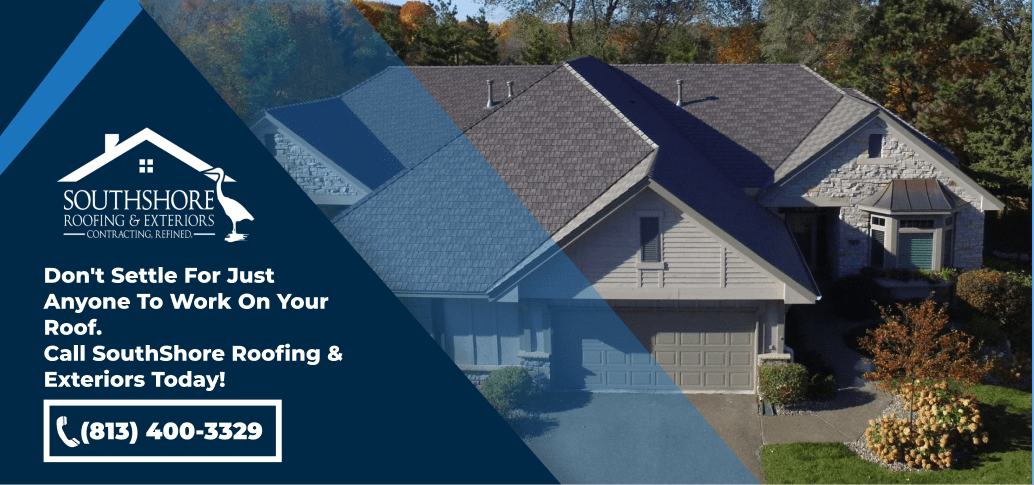When hurricane winds tear through Tampa and surrounding Florida communities, roof damage is often inevitable. After the storm passes, many homeowners face the pressing question: Can you do hurricane roof repair yourself? While the DIY approach might seem less expensive, understanding what repairs you can safely handle versus when to call Tampa roofing professionals is critical for your safety and your home’s integrity.
Hurricane damage to roofs typically manifests as missing shingles, damaged flashing, punctures from flying debris, or, in severe cases, partial structural failure. The scope of repairs varies dramatically based on damage severity, with some minor issues being suitable for homeowner intervention while others need professional solutions.
For Florida homeowners considering DIY hurricane roof repair, assessing the damage accurately is the essential first step. Simple tasks like replacing a few missing shingles or applying temporary patches might be manageable for those with basic home repair skills. However, climbing on a storm-damaged roof presents serious safety hazards that shouldn’t be underestimated.
The decision between DIY repairs and hiring professionals should balance several factors: the extent of damage, your repair skills, available tools, personal safety considerations, and whether your insurance policy covers professional repairs. Taking on roof repairs beyond your capability could worsen damage and lead to personal injury.
Safety First: Assessing Your Roof After a Hurricane
Before attempting any DIY hurricane roof repair work, a safety assessment is essential. Start by examining your roof from the outside to spot obvious damage. Look for missing shingles, visible sagging, or debris. Never climb onto a roof during windy conditions or if there’s any question about its structural integrity.
When ladder access becomes necessary, always use a sturdy ladder with stabilizers, positioned on level ground. Wear non-slip footwear, heavy-duty gloves, and a safety harness if possible. Have someone spot you while you’re on the ladder and roof. If you notice significant sagging, water pooling, or hear creaking sounds, evacuate immediately and call Tampa roofing experts.
Tampa’s unpredictable post-hurricane weather patterns require careful planning for DIY roof repairs. Check local forecasts for at least 48 hours of clear weather before starting any work. Early morning hours are typically best for roof work in Florida to avoid afternoon heat and sudden thunderstorms common during hurricane season.
Document all damage with photographs for insurance purposes before attempting any repairs. Remember that temporary post-hurricane roof repairs like securing tarps can prevent further water intrusion, but shouldn’t be considered permanent solutions. A complete roof assessment and safety precautions not only protect you but also provide valuable information should professional repair become necessary.
Simple DIY Repairs You Can Tackle Yourself
After a hurricane passes through Tampa, certain minor roof repairs can be handled safely by homeowners while waiting for professional help. These temporary fixes can prevent further damage to your home’s interior and belongings following a storm.
For replacing blown-off shingles, start by cleaning the area and removing damaged materials. Apply roofing cement to the underside of the new shingle and press firmly into place. Secure with roofing nails, then apply additional cement over the nail heads. For small leaks, roof sealant applied to the affected area can provide temporary protection until permanent repairs are possible.
Loose flashing around chimneys or vents can be resecured using roofing cement and nails designed specifically for flashing materials. Be sure to clean the area thoroughly before application to ensure proper adhesion.
Every Tampa homeowner should maintain a hurricane preparation kit that includes roofing-specific supplies:
- Roofing cement
- Spare shingles matching your roof
- Plastic roof tarps
- Roofing nails
- Hammer
- Utility knife
- Caulking gun
- Heavy-duty gloves
Local hardware stores in Tampa typically stock hurricane-specific supplies during storm season.
Remember that DIY repairs should only address minor damage. For extensive hurricane roof damage, structural issues, or if you’re uncomfortable working at heights, contact a licensed Tampa roofing contractor immediately. Your safety should always take priority over attempting repairs beyond your skill level.
When to Call the Professionals: Recognizing Your Limitations
While minor repairs might be within your capabilities, there are clear indicators that hurricane roof damage requires professional attention. Structural damage presents the most obvious red flag. If you notice sagging roof sections, cracked or split rafters, or ceiling damage inside your home, contact a Tampa roofing professional immediately. These issues indicate compromised structural integrity that DIY repairs simply cannot address safely.
Large sections of missing shingles, especially if the underlayment is exposed or damaged, need expert intervention. Water stains on ceilings, damp insulation in the attic, or visible light coming through the roof boards mean potential extensive damage that requires thorough professional assessment and repair.
Attempting complex hurricane roof repairs without proper training carries significant risks. Many roofing material warranties become void when installed incorrectly by non-professionals. DIY repairs might inadvertently violate Florida building codes, which are particularly strict due to our hurricane-prone location. Tampa homeowners should understand that improper repairs often lead to more expensive problems, including water damage to interior structures, mold growth, and even complete roof failure during subsequent storms.
Licensed Tampa roofing contractors bring specialized knowledge of local building requirements, proper hurricane-resistant installation techniques, and comprehensive insurance coverage. When weighing the apparent cost savings of DIY roof repair against potential long-term consequences, recognizing your limitations isn’t a weakness — it’s a responsible decision that protects your home’s value and your family’s safety during hurricane season.
Temporary Solutions to Prevent Further Damage
After a hurricane strikes the Tampa region, temporary solutions can prevent additional roof damage while you await permanent repairs. These interim measures are crucial during Florida’s hurricane season when multiple storms may threaten your already vulnerable roof.
Emergency roof tarping requires careful installation to be effective. Select a heavy-duty, UV-resistant tarp that is at least a few feet larger than the total damaged area. Secure the tarp by wrapping the edges around wood pieces and fastening them to undamaged portions of the roof. Avoid nailing directly through the tarp into damaged sections, as this creates new leak points. For small punctures, apply roofing cement under a patch of matching roofing material and seal the edges completely.
Documentation, including photos and damage descriptions, is essential if you plan to file insurance claims. Take clear, well-lit photos of all damage from multiple angles before applying temporary repairs. Continue photographing during and after implementing emergency measures. Create a detailed inventory listing each damaged area with measurements and descriptions. Keep all receipts for materials purchased and save damaged shingles as evidence of the type and extent of damage.
While these temporary solutions can protect your Tampa home from additional water intrusion, they aren’t permanent fixes. Most emergency repairs will last only 30 to 90 days, depending on weather conditions. Contact a qualified Tampa roofing contractor promptly to schedule a professional assessment and permanent hurricane roof repairs.
Understanding Florida’s Building Codes for Hurricane Resistance
Florida’s building codes are among the strictest in the nation for good reason — our vulnerability to hurricanes means robust construction standards are needed. Tampa homeowners attempting DIY hurricane roof repair must understand these regulations to ensure their work doesn’t compromise their home’s integrity or violate local requirements.
The Florida Building Code requires specific wind resistance ratings for roofing materials in Tampa and other coastal areas. These include enhanced nail patterns, proper fastener types, and specific underlayment requirements. Shingles must meet minimum wind resistance ratings ranging from 110 to 130 mph, depending on your exact Tampa location, while roof decking thickness and attachment methods have particular specifications to withstand hurricane-force winds.
Self-performed repairs that don’t adhere to these standards can have serious consequences. Non-compliant repairs may void insurance coverage, complicate future claims, and significantly reduce your home’s hurricane resistance. Many Tampa homeowners are surprised to discover that their insurance companies may deny claims for water damage resulting from improperly performed DIY roof repairs that didn’t meet code requirements.
Properly executed hurricane-resistant roof repairs don’t just protect your home, they can potentially lower your insurance premiums. Many Florida insurance providers offer discounts for homes with verified hurricane mitigation features, including correctly installed roofing systems. Professional documentation of code-compliant repairs provides evidence that could qualify you for these insurance savings, offsetting the initial higher cost of professional roof repair after a hurricane.
How to Prepare Your Roof for Future Hurricane Seasons
Being proactive about hurricane preparedness can save Tampa homeowners significant stress and expense when storm season arrives. Preventive maintenance is your first line of defense against hurricane damage and should become part of your regular home care routine throughout the year.
Schedule roof inspections in spring before hurricane season begins and in fall after it ends. During these inspections, check for loose or damaged shingles, deteriorated flashing, and wear around roof penetrations like vents and chimneys. Clear gutters and downspouts regularly to prevent water backup during heavy storms. Trim overhanging tree branches that could become projectiles or fall onto your roof during high winds.
For Tampa homeowners seeking maximum hurricane protection, professional roof reinforcement options provide significant advantages. Secondary water barriers installed beneath your roofing material create an extra layer of protection against water intrusion if shingles are damaged. Hurricane straps or clips connecting your roof to wall structures dramatically improve wind resistance by creating a continuous load path. Impact-resistant roofing materials, while initially more expensive, offer superior protection against flying debris common during Tampa’s hurricane conditions.
Upgrading to a hurricane-resistant roof system is about more than storm protection — it’s an investment in your home’s long-term value. Many Tampa homeowners find that these improvements qualify for insurance discounts that offset costs over time while providing peace of mind during hurricane season.
Call SouthShore Roofing & Exteriors for Hurricane Roof Repair
While tackling minor repairs after a hurricane can be a satisfying DIY project, certain types of damage require professional expertise. SouthShore Roofing & Exteriors is your trusted local expert in Tampa, ready to handle complex roof repairs that go beyond the scope of DIY. If you encounter large areas of missing shingles, structural damage, or signs of significant water intrusion, it’s crucial to contact professionals. These indicators suggest potential compromises to your home’s safety and structural integrity.
Attempting repairs without the right skills and tools can lead to further damage, potentially voiding warranties or violating building codes. Before risking your safety and investment, call SouthShore Roofing & Exteriors at (813) 400-3329 for a comprehensive assessment and high-quality repair services tailored to hurricane recovery.




